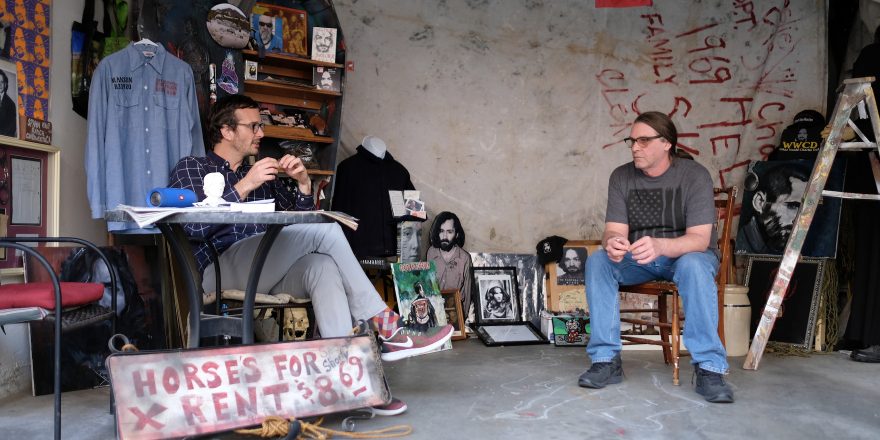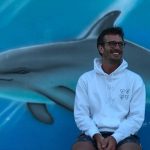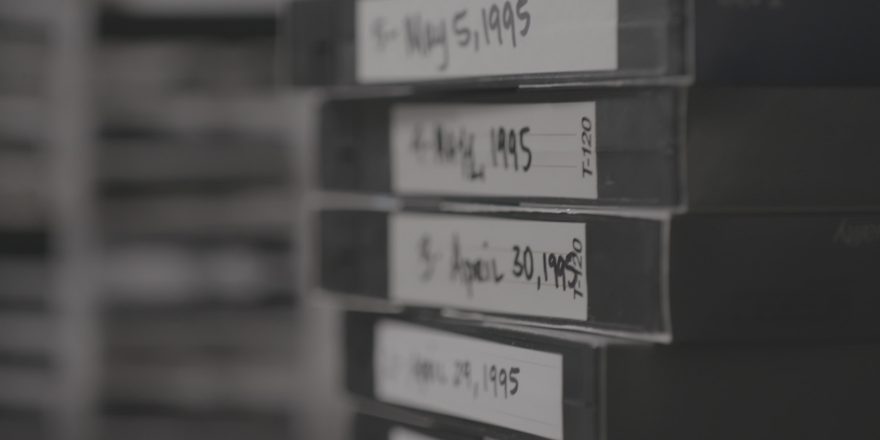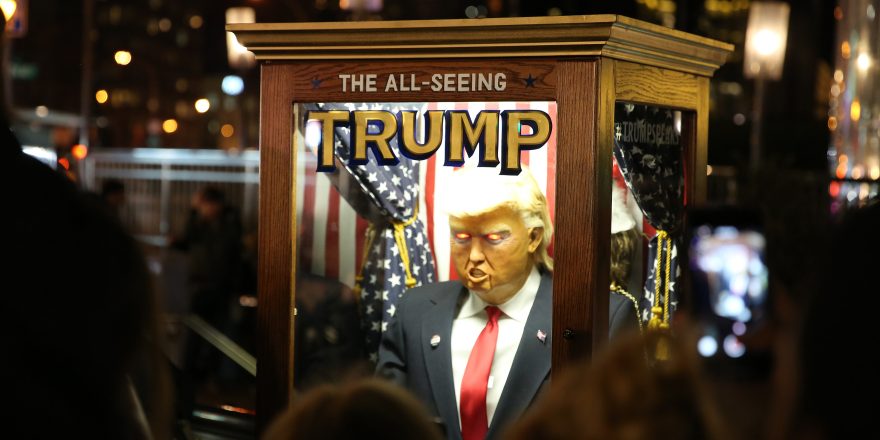How are you meant to comfort a man whose best friend has just died, when his best friend is Charles Manson?
I think out of all the filming we did for our Netflix series Dark Tourist, this was the situation that stands out to me as the most odd.
And there was a lot of odd stuff I encountered over the last year. Me and my team started shooting Dark Tourist in May 2017, exploring Nuclear Tourism that had built up around the failed Fukushima Daiichi nuclear power plant in Japan. As the year rolled on, we explored a ghost city in Cyprus – fiercely guarded by the military – and hung out with white separatists in post-Apartheid South Africa. “We” was our team: a director, assistant director, sound operator, director of photography, and me.
But it was my time – our time – with Michael Channels, in a stuffy, dark room in Los Angeles, that stands out as the most surreal. To most, Manson was America’s boogeyman, convicted of first-degree murder and sentenced to life in prison. But his belief in “Helter Skelter,” his time as a musician, and his penchant for crazed prison interviews also made him a pop-culture icon, shock-rocker Marilyn Manson famously borrowing his surname in the ’90s. Today, various macabre tours take place tracing his favorite haunts, including Spahn Ranch and the Tate house, where the murders took place. This is practically the definition of dark tourism.
Our team had put a lot of groundwork into gaining Channels’ trust in advance. Our director Justin Hawkes talked with him regularly on Facebook, going over the shooting plan and what we needed from our time together. Did he have the letters Manson had sent him? Did he have photos of the two of them together? What was he comfortable covering, and where was best to meet? You know, the boring production stuff that happens before a shoot.
Channels started writing to Manson in prison after he was convicted, curious to learn more about Manson and what drove him. He saw similarities in their upbringing and backgrounds, and he wanted to know more. After writing about 50 letters, Manson replied, and the two became pen pals, and then friends. Eventually, according to Channels, they become best friends. He was the ideal subject for our documentary – he wasn’t just a fan of the macabre, he was a friend.
And so we found ourselves in America, filming the three stories that would make up the episode. As our production office was based in New Zealand, we’d usually travel to shoot one episode at a time. Sometimes, we’d shoot two back to back, before making the long trek back to New Zealand to work on editing the previous episode, or prepping the next.
After 10 days in America, I’d spent time with doomsday preppers and had an encounter at McKamey Manor, an “extreme haunt” in Summertown, Tennessee, where people pay (in dog food) to be tortured. But over that time, I was most looking forward to meeting with Channels in L.A. Here was a man who’d taken his morbid fandom to a whole new level, befriending someone who appeared unfriendable.
And then on November 19, 2017, Charles Manson died. We were due to start filming our Manson story the following week.
I remember sitting on the lobby of a hotel in Grant County, Kentucky, watching the news. “Glad he’s dead,” a man muttered next to me, as he ate some cornflakes. He had a T-shirt on for the Ark Encounter. In Manson’s death, suddenly the story felt much more alive and vital. A fight had broken out over Manson’s body. On one side, Charles Manson’s son. On the other, Manson’s best friend – Michael Channels. It was unclear who had the will. Or, to be more specific, who had the most up-to-date will.
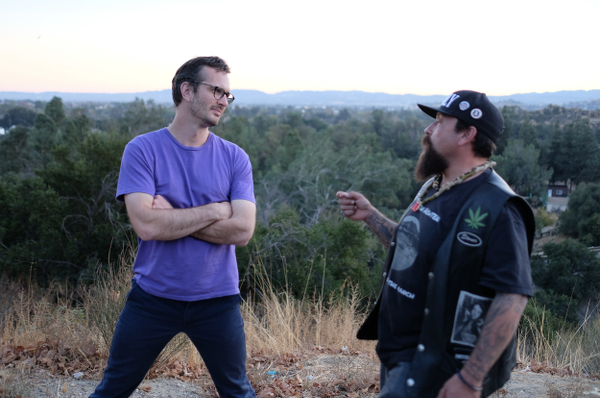
By this stage, we’d taken to communicating with Channels via his offsider, a guy called Stoner. Stoner gave tours of Spahn Ranch, and held Channels in high esteem. We were told the rules had changed: Due to pressing legal issues (the will), Channels wouldn’t be able to talk about Manson’s death. For all intents and purposes, he wanted us to act like Manson was still alive.
It was a strange situation to be in, and I think I would have been bothered by it more if I was back where I’d started my career, in a newsroom. As a news journalist, all my questions would naturally have been focussed around this new thing: Manson’s death. The will. The drama. But now I was more interested in the men’s relationship, and how it had functioned.
Finally, I found myself wandering up the steps to knock on Channels’ door. Dom Fryer, our D.P., followed behind me. It was a style we’d set for the show – the camera always followed me. The audience would be on the journey with me. The door opened. It was Stoner. I was lead into a smoky, stale front room. The blinds drawn, everything was a dull shade of brown. Michael Channels sat smoking on the couch. “Hello,” I said, walking over to him and shaking his hand. His eyes were downcast and distrustful, and we started our conversation. He was pale, his stringy white hair pulled back in a ponytail, some loose strands falling down around his eyes.
That interview wasn’t my best work. I felt nervous, somehow equating him to Charles Manson. Something about his stony demeanor initially threw me, and it wasn’t until he told me that I reminded him of Louis Theroux that the tone changed. I laughed in a kind of mock-offense, and he laughed, too. I remembered that we were both just silly humans, sitting on a couch, talking about a dead man.
And I figured out why Channels’ was so downcast and withdrawn: he was mourning the death of his friend.
It was a strange thing, when I thought about it. Manson was – whichever way you looked at it – a real piece of shit. Sure, he may have partly taken the fall for other people’s actions (Tex Watson, for one), but he had no regrets about leading the Manson family, and had a swastika tattooed on his forehead. He wasn’t a good guy.
Normally, I’d try to commiserate with someone whose friend had just passed away, but I struggled to do that with Channels. Instead, I asked him if it was right to mourn somebody like Manson. Channels looked at me, disgusted. “Fuck you,” his look said.
At some point in that dark room, we stopped shooting and put up some lights. With so many people in one tiny room, things were physically heating up. By the time we opened the front door to take a break, we all stank of smoke. It’s not in the documentary, but while we stood down, Stoner got a phone call from a British tabloid wanting to interview Channels about the fight for Manson’s body. Stoner started negotiating, acting like Channels’ agent. You got the feeling Stoner could see a payday coming. Like everyone in L.A., he was hustling.
The reality of Manson’s death further sunk in when we visited a candlelit vigil for Manson at Spahn Ranch. As the sun set, I left the road and walked off down a dirt path. Our crew followed, and up ahead I heard voices. A small crowd had gathered around a makeshift shrine. There were T-shirts and photos of Manson set down on the ground. Candles were burning everywhere. With the sun setting, it was the dream scene for a documentary crew. If Manson had still been alive, we’d never have gotten this surreal scene. It felt special to be there. Despite all the NDAs we’d had people sign, it all sort of went out the window as half the mourners streamed the whole thing on their cellphones. Before you saw my interview with Stoner on Netflix, you could have seen it streamed on half a dozen Manson Facebook pages. Such is this modern age, right?
I looked around, and noted the strange relationship all these men shared. And yes, they were all men. White men, if you want to be specific.
You had Channels, who was a friend of Manson. Then you had Stoner, who was a fan of Manson. Stoner looked up to Channels, as Channels looked up to Manson. Then you had all these other people – who were followers. Not of Manson, but of Stoner and Channels. It’s like Manson’s infamy had trickled down to Channels and Stoner. They were getting a piece of the pie. And I suppose, in a way, us being there filming was giving them exactly what they craved: the limelight.



